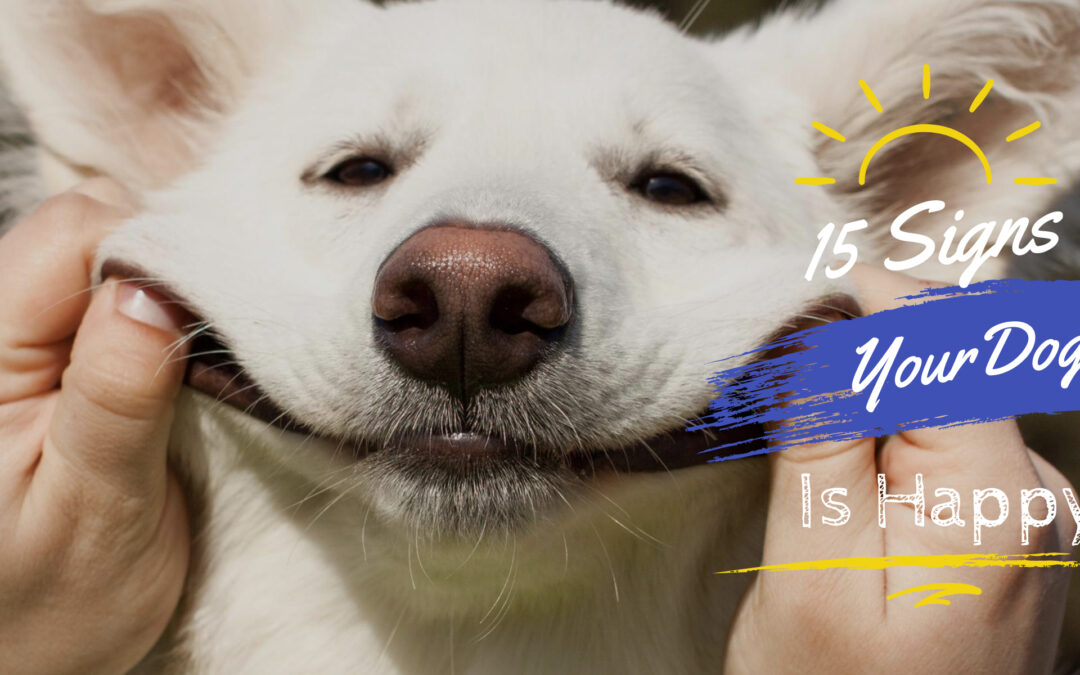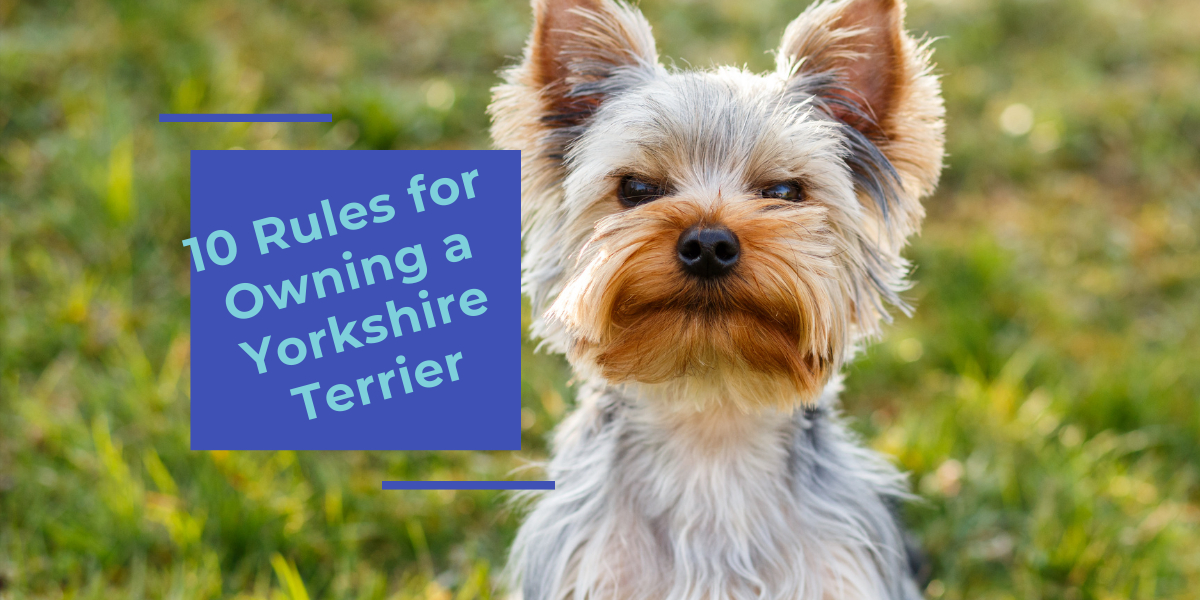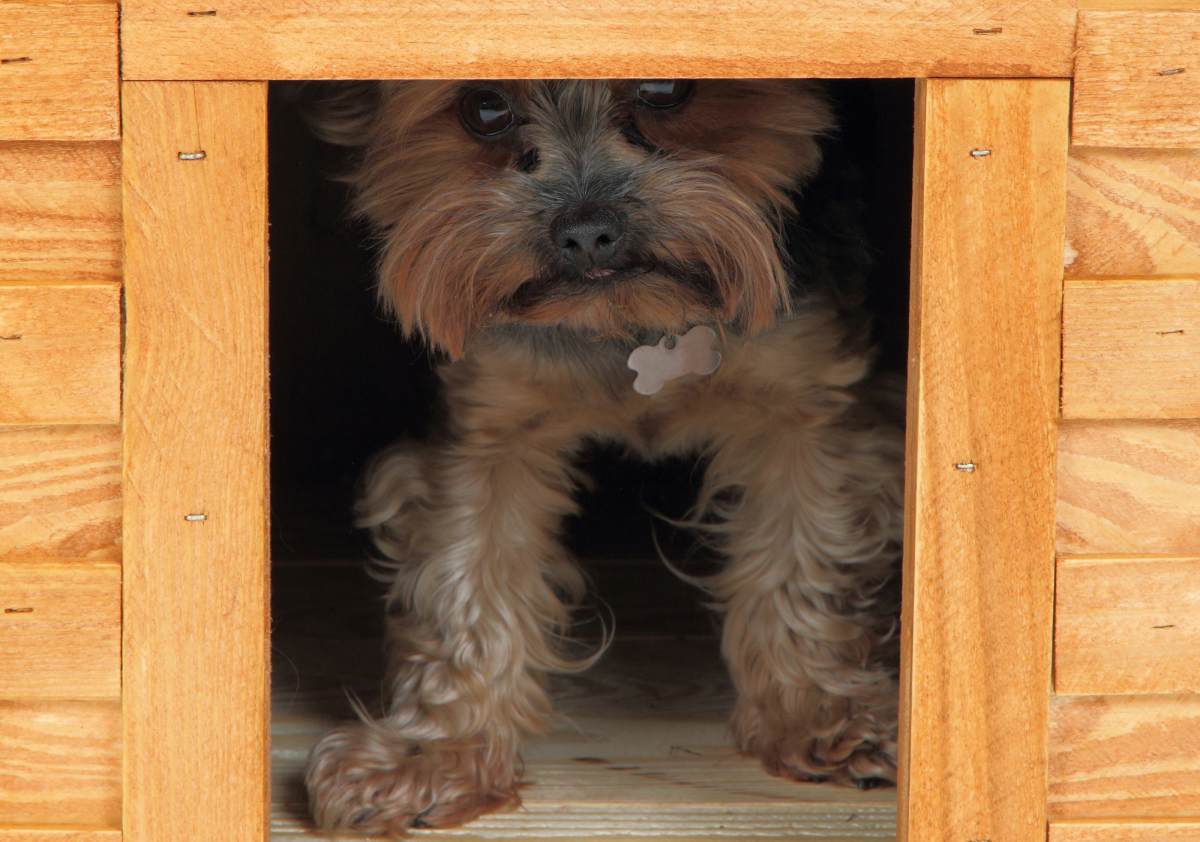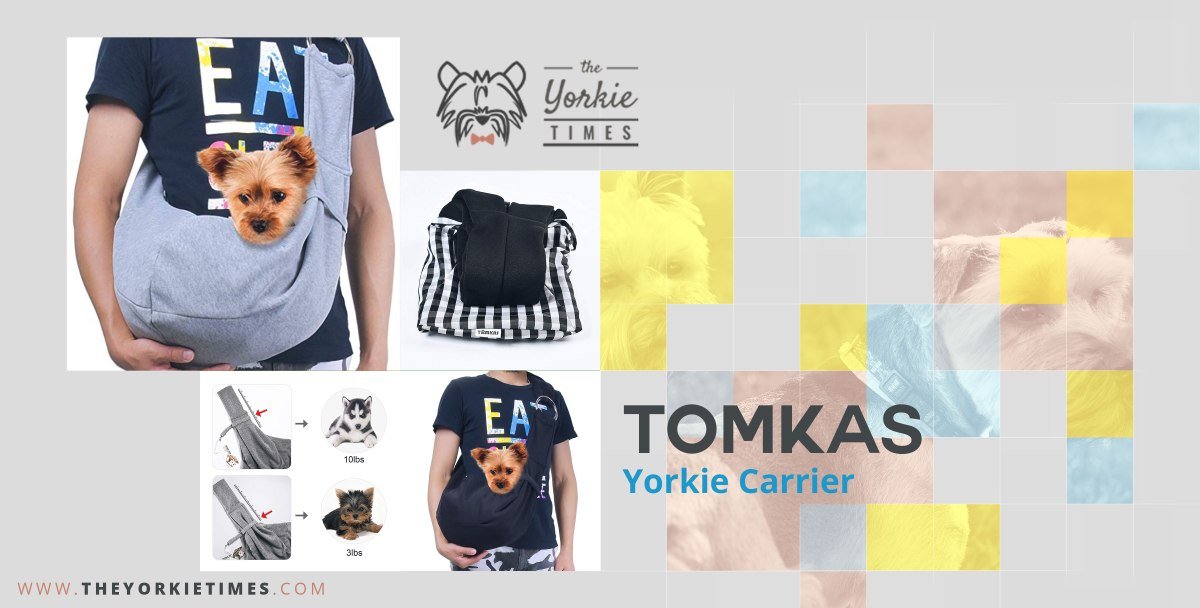All dog owners want their furry friends to be happy and healthy. It is our job to return all the love and affection they show us. Sometimes, it can be hard to know exactly how our dogs are feeling. Every dog has their own unique temperaments and personalities. As your bond grows with your dog, you will learn their mannerisms and regular behaviour so that you will be able to tell how they are feeling. The Yorkie Times has compiled a list of 15 signs your dog is happy to help you know what to look for when caring for your pet.
Do You Know The Signs Your Dog Is Happy?
1. Happy and Content Dogs Jump Around!
Jumping up and down is a clear indication that a dog is feeling content. Have you ever observed your furry companion leaping with joy when you return home after a tiresome day? This behaviour is exhibited by dogs who are exceptionally blissful, especially when it’s playtime. Your dog’s enthusiasm is through the roof, and their elation cannot be contained.
2. Fur-Babies Enjoy Cuddle Time
When your dog snuggles up to you, it’s a positive indication of their contentment. Being pack animals, dogs prefer sleeping beside individuals, whether they be people, other dogs, or animals they’ve formed a bond. This behaviour indicates that they find your presence enjoyable and wish to remain close to you. A joyful dog will seek out their family’s company and seek you out for affection. However, keep in mind that certain dogs are more independent than others, and temperament disparities must be taken into account.
3. Dogs Laugh Out Loud
It may surprise you, but dogs laugh too when you engage in play with them. This is referred to as play panting and even though it may not sound identical to human laughter, it is a positive indication that your pooch is happy. Animal researchers have identified that the frequency of play panting is distinct from regular panting. Interestingly, the cheerful sound of dog laughter has been found to have an inspiring impact on the behaviour of other dogs as well. Researchers have conducted experiments whereby recordings of dog laughter were played over a speaker in an observation room, where dogs would eagerly grab a toy and search for their imaginary playmate. We’ve all seen a dog with its mouth open in a way that is absolutely smiling!
4. Obedience Is A Sign of Trust in Dogs
Your canine companion tries to comply with the rules. Unwillingness could signify discomfort or unhappiness in canines. Similar to a defiant child, dogs also consciously disregard your directions when they are not pleased. When your dog demonstrates the ability to sit or perform tricks, but suddenly cease to follow instructions, it could imply that your dog is discontented with you or something in their environment. Some individuals perceive training a dog to be solely about the pooch; however, it involves fostering a connection between both parties holding the leash. If a dog lacks trust in their owner, they are less likely to exhibit favourable responses during training sessions.
5. Playful Dogs Take A Bow
Have you witnessed dogs engaging in playful activities? They pursue each other, leap on one another, spin around, and occasionally nibble at each other’s faces. At some point, they may crouch down for several seconds before resuming their frolicking. Although it may appear that the dog is preparing to assault, it is, in reality, a request to play. You know a play bow is happening when a dog puts its chest lowered to the ground with its bottom in the air. This delightful gesture is an unmistakable indication that your dog is thrilled and is attempting to instigate play with you or another animal.
6. Happy Puppies Make Eye Contact
Your canine companion consistently meets your gaze with a tender look. In dogs, gentle eye contact is an important indication of trust. Therefore, those affectionate gazes that you both exchange while lounging on the sofa are a clear indication of your pup’s contentment. Additionally, dogs use eye contact to gauge your emotional state and ensure that you are as blissful as they are.
7. Doggie Body Language Speaks Volumes
Happy dogs display a calm physical demeanour. A dog’s entire body, including its tail, will exhibit a relaxed posture when they are joyful, often accompanied by a wagging motion. A content dog’s whole body may join in with its tail’s wag. Additionally, a blissful canine will appear to grin, with a mouth that is gentle and at ease. Though certain teeth may be visible, it is not a sign of aggression.

8. Yorkie Belly Rubs!
When dogs roll over and reveal their stomachs to you, it’s an indication of their happiness. This behaviour is a display of vulnerability, as the dog is in a highly exposed position. Requesting affection from humans in the form of belly rubs demonstrates a sense of ease, satisfaction, and confidence. When a dog is at ease and looks forward to being petted or played with, it’s a clear indication that they are thrilled.
9. A Happy Puppy Has A Playful Attitude
Happy dogs often exhibit playfulness, which is achieved through a carefree and relaxed state. Stress or pain may hinder their ability to engage in play and result in minimal participation. While a dog may seem to approach playtime, their lack of enthusiasm could indicate an underlying illness or discomfort. However, lacking playfulness does not necessarily mean unhappiness in canines. Some dog breeds may have a natural disposition towards being less active or are too laid-back to participate in high-energy activities.
10. Lean On Me
Dogs that are content tend to engage in significant physical interaction with their owners. When your furry friend responds positively, draws near, or inclines towards you, it is a definite sign of their affection and enjoyment of the contact. In essence, your pet is pleased to be in your company. Conversely, if something bothers your dog or induces stress, they may endeavour to conceal themselves or escape to another region if the opportunity arises. They might even avert their gaze from that individual.
11. Welcome Home Puppy Joy!
If your dog is happy, they will eagerly await your return home and show great enthusiasm when they see you. They will have been waiting for you and will be eager to spend time playing and enjoying your company. Additionally, it’s important to remember that happy dogs will become excited about their favourite activities, such as meals, playing, or going on walks. Some dogs may even exhibit bouncy, dancing-like behaviour to express their excitement.
12. Happy Dogs Have Time to Relax
Not all happy dogs exhibit obvious signs of joy, so if your dog seems laid back, there’s no need to fret. The absence of hyperactivity can actually be a sign that your furry friend is content. Generally, adult dogs that are healthy and happy can sleep a substantial amount of time, up to 16 hours a day. Should your dog be sleeping less, it could be signalling an underlying issue such as worry or ailment.
13. A Happy Dog Has a Healthy Appetite
Usually, a dog that has a strong appetite is in a good state of mind, physically fit, and satisfied. However, if your furry friend denies food or has a reduced desire to eat, it may indicate that they are unwell or experiencing stress or anxiety. It might even be indicative of a severe underlying condition. If your dog isn’t eating normally, seek the aid of a veterinarian.
14. Healthy and Happy Hounds Have a Mighty Fine Coat
A dog’s physical and emotional well-being can be determined by the condition of its coat. A lustrous, well-groomed coat is an indication of good health and an absence of stress. A dog with an unkempt, uneven coat may be unhappy or experience environmental stress, such as neglect of their grooming routine. Additionally, their skin may show signs of flaking, and if this is the case, it is important to seek advice from a veterinarian as it may indicate a health concern.
15. Good Manners Are A Good Sign
If dogs engage in harmful or aggressive actions such as damaging the furniture or carpet, growling, or biting, it usually indicates that they’re experiencing stress, anxiety, or boredom. Being left alone without their owners can trigger intense anxiety which causes them to chew to relieve the separation anxiety. If the dogs have pent-up energy, they may chew out of boredom to keep themselves occupied. To address this, dogs require more play, exercise, and physical activity. However, this does not apply to all dogs. Young puppies may chew on objects to alleviate pain and soothe their gums while some breeds of dogs are naturally more active than others.
Looking for more amazing Yorkie facts that will open your heart to these wonderful little dogs? Stay tuned with us for more informative and fun posts on all things Yorkie related. If you are looking for a journal to track your life with your Yorkie, we have you covered with The Yorkie Times Dog Journal! We also have a wonderful Facebook community that you can join as well!





Recent Comments